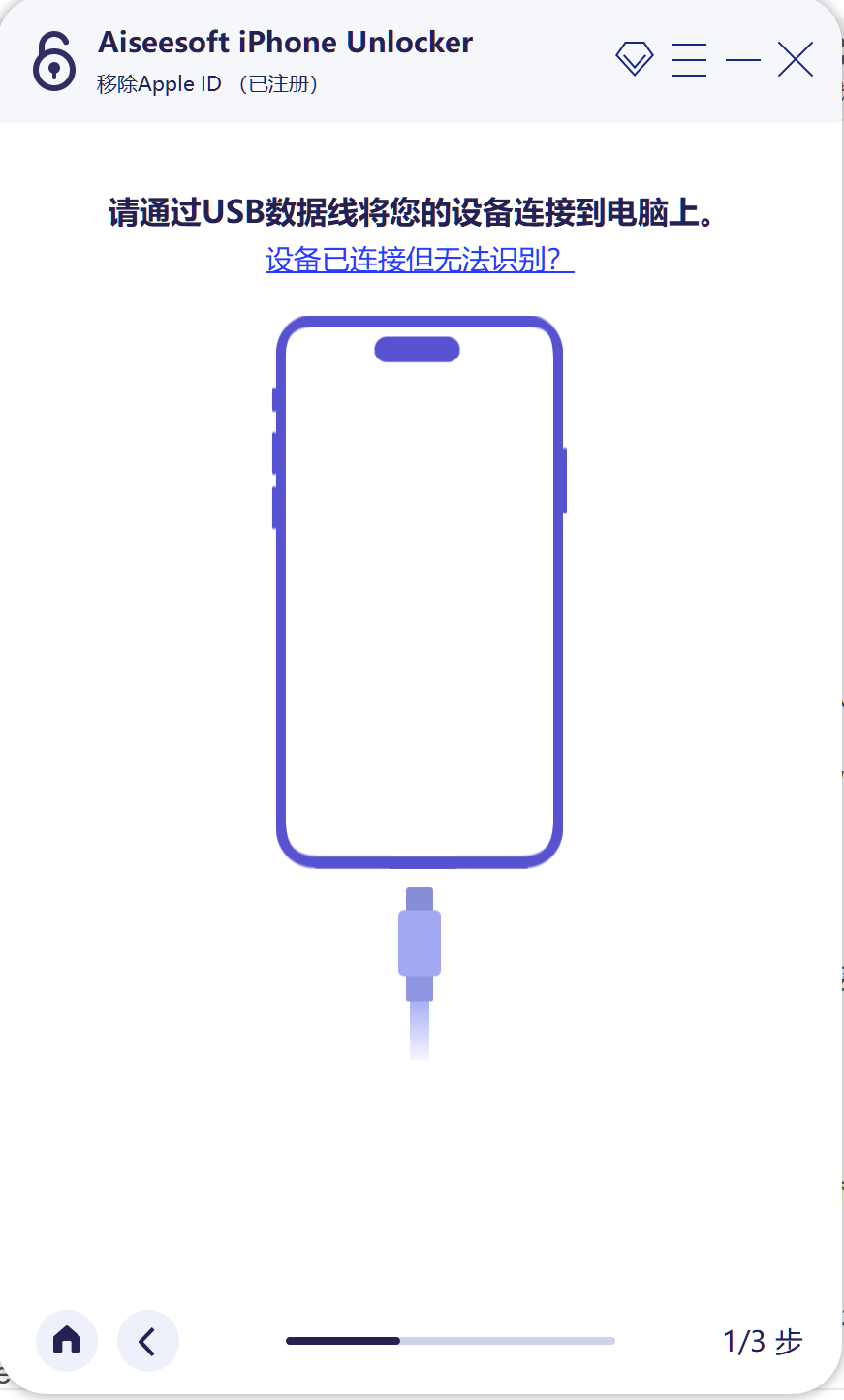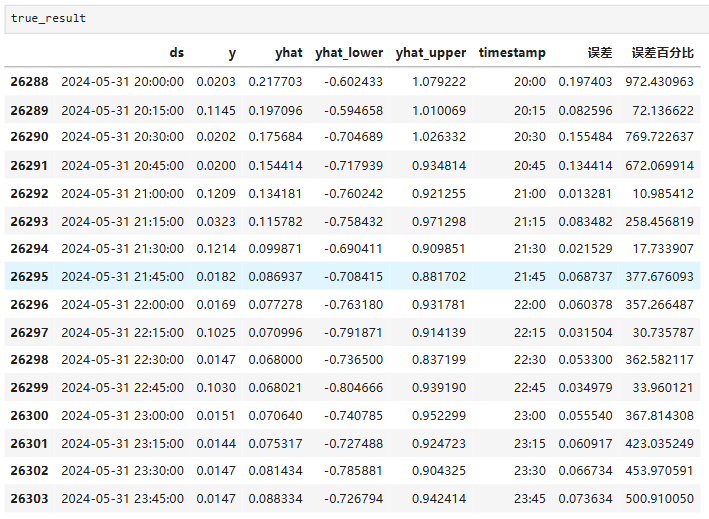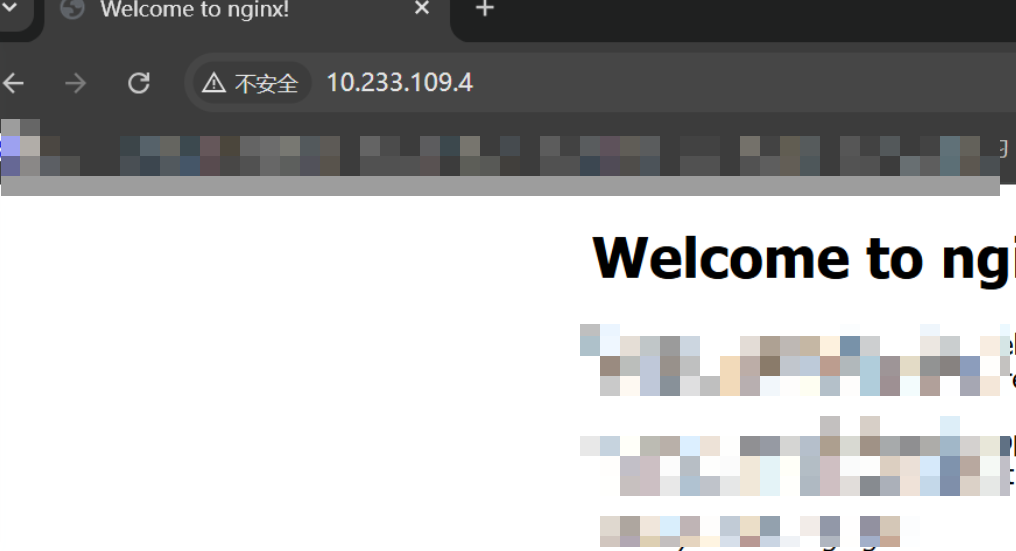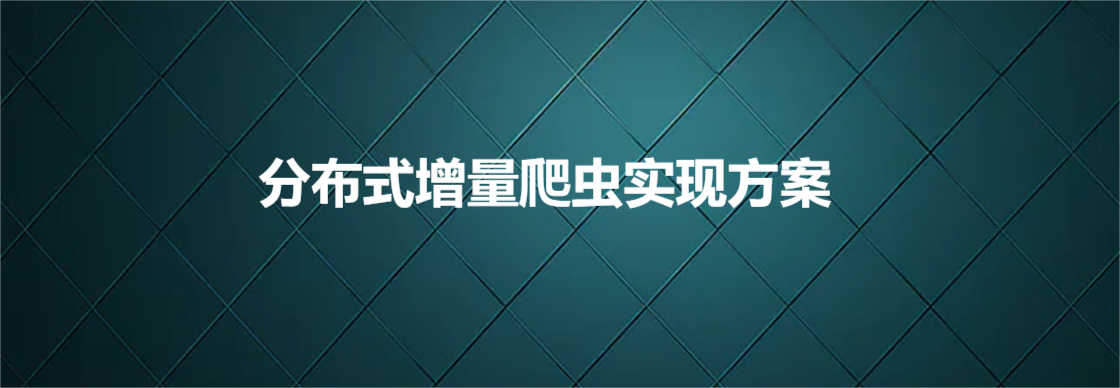单链表的多语言表达:C++、Java、Python、Go、Rust

单链表
是一种链式数据结构,由一个头节点和一些指向下一个节点的指针组成。每个节点包含一个数据元素和指向下一个节点的指针。头节点没有数据,只用于表示链表的开始位置。
单链表的主要操作包括:
- 添加元素:在链表的头部添加新元素,需要修改头节点的指针。
- 删除元素:删除链表中的元素,需要修改头节点和其他节点的指针。
- 查找元素:在链表中查找某个元素,需要遍历整个链表。
- 遍历链表:按照链表的顺序依次访问每个元素,需要遍历整个链表。
单链表相对于数组的优点是插入和删除元素时不需要移动其他元素,时间复杂度为O(1)。但是,在查找元素时,单链表比数组要慢,时间复杂度为O(n)。

本文总结了 C++、Java、Python、Go、Rust 五种语言的单链表的表达:
C++
c++语言既可以用struct也能用class来表示链表节点,类可以定义方法调用相对方便。另外C++类需要自定义析构函数用以退出时释放节点所占空间,其它语言有自动的垃圾回收机制。
struct
// 定义结构体 Node,表示链表中的节点
struct Node {
int data; // 节点的数据
Node* next; // 指向下一个节点的指针
};
// 定义类 LinkedList,表示链表
class LinkedList {
private:
Node* head; // 指向链表头节点的指针
}
代码:
#include <iostream>using namespace std;// 定义结构体 Node,表示链表中的节点
struct Node {int data; // 节点的数据Node* next; // 指向下一个节点的指针
};// 定义类 LinkedList,表示链表
class LinkedList {
private:Node* head; // 指向链表头节点的指针public:// 构造函数,初始化链表为空链表LinkedList() {head = NULL;}// 析构函数,释放链表中的所有节点~LinkedList() {Node* curr = head;while (curr != NULL) {Node* next = curr->next;delete curr;curr = next;}}// 在链表头部添加一个新节点void add(int value) {Node* newNode = new Node;newNode->data = value;newNode->next = head;head = newNode;}// 在链表尾部添加一个新节点void push(int value) {Node* newNode = new Node;newNode->data = value;newNode->next = NULL;if (head == NULL) {head = newNode;} else {Node* curr = head;while (curr->next != NULL) {curr = curr->next;}curr->next = newNode;}}// 删除最后一个节点,并返回该节点的数据 int pop() {if (head == NULL) {return -1;} else if (head->next == NULL) {int data = head->data;delete head;head = NULL;return data;} else {Node* curr = head;while (curr->next->next != NULL) {curr = curr->next;}int data = curr->next->data;delete curr->next;curr->next = NULL;return data;}}// 遍历链表,打印每个节点的数据void traverse() {Node* curr = head;while (curr != NULL) {cout << curr->data << "->";curr = curr->next;}cout << "nil" << endl;}
};int main() {LinkedList list;list.traverse(); // 打印空链表 nillist.add(1); // 在链表头部添加节点 1list.traverse(); // 打印链表 1->nillist.add(2); // 在链表头部添加节点 2list.traverse(); // 打印链表 2->1->nillist.add(3); // 在链表头部添加节点 3list.traverse(); // 打印链表 3->2->1->nillist.push(4); // 在链表尾部添加节点 4list.traverse(); // 打印链表 3->2->1->4->nillist.push(5); // 在链表尾部添加节点 5list.traverse(); // 打印链表 3->2->1->4->5->nilcout << list.pop() << endl; // 删除尾节点,并输出节点数据list.traverse(); // 打印链表 3->2->1->4->nilcout << list.pop() << endl; // 删除尾节点,并输出节点数据list.traverse(); // 打印链表 3->2->1->nilreturn 0;
}class
// 定义类 Node,表示链表中的节点
class Node {
public:
int data;
Node* next;
Node(int value) {
data = value;
next = NULL;
}
};
// 定义类 LinkedList,表示链表
class LinkedList {
private:
Node* head; // 指向链表头节点的指针
};
代码:
#include <iostream>using namespace std;// 定义类 Node,表示链表中的节点
class Node {
public:int data;Node* next;Node(int value) {data = value;next = NULL;}
};// 定义类 LinkedList,表示链表
class LinkedList {
private:Node* head; // 指向链表头节点的指针public:// 构造函数,初始化链表为空链表LinkedList() {head = NULL;}// 析构函数,释放链表中的所有节点~LinkedList() {Node* curr = head;while (curr != NULL) {Node* next = curr->next;delete curr;curr = next;}}// 在链表头部添加一个新节点void add(int value) {Node* newNode = new Node(value);newNode->next = head;head = newNode;}// 在链表尾部添加一个新节点void push(int value) {Node* newNode = new Node(value);newNode->next = NULL;if (head == NULL) {head = newNode;} else {Node* curr = head;while (curr->next != NULL) {curr = curr->next;}curr->next = newNode;}}// 删除最后一个节点,并返回该节点的数据 int pop() {if (head == NULL) {return -1;} else if (head->next == NULL) {int data = head->data;delete head;head = NULL;return data;} else {Node* curr = head;while (curr->next->next != NULL) {curr = curr->next;}int data = curr->next->data;delete curr->next;curr->next = NULL;return data;}}// 遍历链表,打印每个节点的数据void traverse() {Node* curr = head;while (curr != NULL) {cout << curr->data << "->";curr = curr->next;}cout << "nil" << endl;}
};int main() {LinkedList list;list.traverse(); // 打印空链表 nillist.add(1); // 在链表头部添加节点 1list.traverse(); // 打印链表 1->nillist.add(2); // 在链表头部添加节点 2list.traverse(); // 打印链表 2->1->nillist.add(3); // 在链表头部添加节点 3list.traverse(); // 打印链表 3->2->1->nillist.push(4); // 在链表尾部添加节点 4list.traverse(); // 打印链表 3->2->1->4->nillist.push(5); // 在链表尾部添加节点 5list.traverse(); // 打印链表 3->2->1->4->5->nilcout << list.pop() << endl; // 删除尾节点,并输出节点数据list.traverse(); // 打印链表 3->2->1->4->nilcout << list.pop() << endl; // 删除尾节点,并输出节点数据list.traverse(); // 打印链表 3->2->1->nilreturn 0;
}Java
Java没有跟C或Go类似的struct结构体,只有用类class来表达。

class
public class LinkedList {
public class Node {
public int data;
public Node next;
public Node(int value) {
data = value;
next = null;
}
}
public LinkedList() {
head = null;
}
}
代码:
public class LinkedList {public class Node {public int data;public Node next;public Node(int value) {data = value;next = null;}}public LinkedList() {head = null;}private Node head;// 在链表头部添加一个新的节点public void add(int value) {Node newNode = new Node(value);newNode.next = head;head = newNode;}// 在链表尾部添加一个新的节点public void push(int value) {Node newNode = new Node(value);if (head == null) {head = newNode;} else {Node curr = head;while (curr.next != null) {curr = curr.next;}curr.next = newNode;}}// 删除尾节点,并返回该节点的数据public int pop() {if (head == null) {return -1;} else if (head.next == null) {int data = head.data;head = null;return data;} else {Node curr = head;while (curr.next.next != null) {curr = curr.next;}Node tail = curr.next;curr.next = null;return tail.data;}}// 遍历链表,打印每个节点的数据public void traverse() {Node curr = head;while (curr != null) {System.out.print(curr.data + "->");curr = curr.next;}System.out.println("nil");}public static void main(String[] args) {LinkedList list = new LinkedList();list.traverse(); // 打印空链表 nillist.add(1); // 在链表头部添加节点 1list.traverse(); // 打印链表 1->nillist.add(2); // 在链表头部添加节点 2list.traverse(); // 打印链表 2->1->nillist.add(3); // 在链表头部添加节点 3list.traverse(); // 打印链表 3->2->1->nillist.push(4); // 在链表尾部添加节点 4list.traverse(); // 打印链表 3->2->1->4->nillist.push(5); // 在链表尾部添加节点 5list.traverse(); // 打印链表 3->2->1->4->5->nilSystem.out.println(list.pop()); // 删除尾节点,并输出节点数据list.traverse(); // 打印链表 3->2->1->4->nilSystem.out.println(list.pop()); // 删除尾节点,并输出节点数据list.traverse(); // 打印链表 3->2->1->nil}
}Python
Python也没有struct结构体,只能用类class来表达。而且python是动态类型语言,变量在创建时无需显式指定类型,也没有指针概念。

class
class Node:
def __init__(self, data):
self.data = data # 节点的数据
self.next = None # 节点的下一个指针,初始为空
class LinkedList:
def __init__(self):
self.head = None # 链表的头指针,初始为空
代码:
class Node:def __init__(self, data):self.data = data # 节点的数据self.next = None # 节点的下一个指针,初始为空class LinkedList:def __init__(self):self.head = None # 链表的头指针,初始为空def add(self, data):# 在链表头部插入一个新节点newNode = Node(data)newNode.next = self.headself.head = newNodedef push(self, data):# 在链表尾部添加一个新节点newNode = Node(data)if self.head is None:self.head = newNodeelse:curr = self.headwhile curr.next is not None:curr = curr.nextcurr.next = newNodedef pop(self):# 删除尾节点,并返回该节点的值if self.head is None:return Noneif self.head.next is None:data = self.head.dataself.head = Nonereturn datacurr = self.headwhile curr.next.next is not None:curr = curr.nexttail = curr.nextcurr.next = Nonereturn tail.datadef traverse(self):# 遍历链表,打印每个节点的数据curr = self.headwhile curr is not None:print(curr.data, end='->')curr = curr.nextprint('nil')if __name__ == '__main__':head = LinkedList() # 创建链表head.traverse() # 遍历空链表head.add(1) # 在链表头部添加节点 1head.traverse() # 遍历链表 1->nilhead.add(2) # 在链表头部添加节点 2head.traverse() # 遍历链表 2->1->nilhead.add(3) # 在链表头部添加节点 3head.traverse() # 遍历链表 3->2->1->nilhead.push(4) # 在链表尾部添加节点 4head.traverse() # 遍历链表 3->2->1->4->nilhead.push(5) # 在链表尾部添加节点 5head.traverse() # 遍历链表 3->2->1->4->5->nilprint(head.pop()) # 删除尾节点,并输出节点数据head.traverse() # 打印链表 3->2->1->4->nilprint(head.pop()) # 删除尾节点,并输出节点数据head.traverse() # 打印链表 3->2->1->nil
Golang
Go没有class类,使用结构体 struct 来代替类。结构体可以包含字段(成员变量),并且可以定义方法(成员函数)来操作结构体的数据。

struct
type Node struct {
data int
next *Node
}
type LinkedList struct {
head *Node
}
// 创建一个新的节点
func new(value int) *Node {
return &Node{
data: value,
next: nil,
}
}
代码:
package mainimport "fmt"type Node struct {data intnext *Node
}type LinkedList struct {head *Node
}// 创建一个新的节点
func new(value int) *Node {return &Node{data: value,next: nil,}
}// 在链表头部添加一个新节点
func (list *LinkedList) add(value int) {newNode := new(value)newNode.next = list.headlist.head = newNode
}// 在链表尾部添加一个新节点
func (list *LinkedList) push(value int) {newNode := new(value)if list.head == nil {list.head = newNode} else {curr := list.headfor curr.next != nil {curr = curr.next}curr.next = newNode}
}// 删除尾节点,并返回该节点的值
func (list *LinkedList) pop() int {if list.head == nil {return -1} else if list.head.next == nil {data := list.head.datalist.head = nilreturn data} else {curr := list.headfor curr.next.next != nil {curr = curr.next}tail := curr.nextcurr.next = nilreturn tail.data}
}// 遍历链表,打印每个节点的数据
func (list *LinkedList) traverse() {curr := list.headfor curr != nil {fmt.Printf("%d->", curr.data)curr = curr.next}fmt.Println("nil")
}func main() {list := LinkedList{}list.traverse() // 打印空链表 nillist.add(1) // 在链表头部添加节点 1list.traverse() // 打印链表 1->nillist.add(2) // 在链表头部添加节点 2list.traverse() // 打印链表 2->1->nillist.add(3) // 在链表头部添加节点 3list.traverse() // 打印链表 3->2->1->nillist.push(4) // 在链表尾部添加节点 4list.traverse() // 打印链表 3->2->1->4->nillist.push(5) // 在链表尾部添加节点 5list.traverse() // 打印链表 3->2->1->4->5->nilfmt.Println(list.pop()) // 删除尾节点,并打印数据list.traverse() // 打印链表 3->2->1->4->nilfmt.Println(list.pop()) // 删除尾节点,并打印数据list.traverse() // 打印链表 3->2->1->nil
}
Rust
Rust中也没有类的概念,但它提供了结构体 struct 和 trait 两种重要的机制来实现面向对象的编程风格。结构体用于定义数据结构,而 trait 则用于定义方法集合。
另外在Rust中,一般不使用unsafe指针std::ptr来操作链表,而是 Option 类型来表示链表指针,它代表的值可以存在(Some)也可以不存在(None)。Option 类型被广泛用于处理可能为空的值,以避免出现空指针异常。
struct
struct Node {
data: i32,
next: Option<Box<Node>>,
}
impl Node {
fn new(value: i32) -> Node {
Node { data: value, next: None }
}
}
struct LinkedList {
head: Option<Box<Node>>,
}
impl LinkedList {
fn new() -> LinkedList {
LinkedList { head: None }
}
}
代码:
struct Node {data: i32,next: Option<Box<Node>>,
}impl Node {fn new(value: i32) -> Node {Node { data: value, next: None }}
}struct LinkedList {head: Option<Box<Node>>,
}impl LinkedList {fn new() -> LinkedList {LinkedList { head: None }}// 在链表头部添加一个新节点fn add(&mut self, value: i32) {let mut new_node = Box::new(Node::new(value));new_node.next = self.head.take();self.head = Some(new_node);}// 在链表尾部添加一个新节点fn push(&mut self, value: i32) {let new_node = Box::new(Node::new(value));let mut curr = &mut self.head;while let Some(node) = curr {curr = &mut node.next;}*curr = Some(new_node);}// 删除尾节点,并返回该节点的数据fn pop(&mut self) -> Option<i32> {if self.head.is_none() {return None;}if self.head.as_ref().unwrap().next.is_none() {let data = self.head.take().unwrap().data;return Some(data);}let mut curr = self.head.as_mut().unwrap();while curr.next.as_ref().unwrap().next.is_some() {curr = curr.next.as_mut().unwrap();}let data = curr.next.take().unwrap().data;Some(data)}// 遍历链表,打印每个节点的数据fn traverse(&self) {let mut curr = &self.head;while let Some(node) = curr {print!("{}->", node.data);curr = &node.next;}println!("nil");}
}fn main() {let mut list = LinkedList::new();list.traverse(); // 打印空链表 nillist.add(1); // 在链表头部添加节点 1list.traverse(); // 打印链表 1->nillist.add(2); // 在链表头部添加节点 2list.traverse(); // 打印链表 2->1->nillist.add(3); // 在链表头部添加节点 3list.traverse(); // 打印链表 3->2->1->nillist.push(4); // 在链表尾部添加节点 4list.traverse(); // 打印链表 3->2->1->4->nillist.push(5); // 在链表尾部添加节点 5list.traverse(); // 打印链表 3->2->1->4->5->nilprintln!("{}", list.pop().unwrap()); // 删除尾节点,并输出节点数据list.traverse(); // 打印链表 3->2->1->4->nilprintln!("{}", list.pop().unwrap()); // 删除尾节点,并输出节点数据list.traverse(); // 打印链表 3->2->1->nil
}struct unsafe
struct Node {
data: i32,
next: *mut Node,
}
impl Node {
fn new(value: i32) -> Node {
Node { data: value, next: std::ptr::null_mut() }
}
}
struct LinkedList {
head: *mut Node,
}
impl LinkedList {
fn new() -> LinkedList {
LinkedList { head: std::ptr::null_mut() }
}
}
代码:
struct Node {data: i32,next: *mut Node,
}impl Node {fn new(value: i32) -> Node {Node { data: value, next: std::ptr::null_mut() }}
}struct LinkedList {head: *mut Node,
}impl LinkedList {fn new() -> LinkedList {LinkedList { head: std::ptr::null_mut() }}fn add(&mut self, value: i32) {let mut new_node = Box::new(Node::new(value));new_node.next = self.head;self.head = Box::into_raw(new_node);}fn push(&mut self, value: i32) {let new_node = Box::new(Node::new(value));let mut curr = &mut self.head;while !(*curr).is_null() {curr = unsafe { &mut (**curr).next };}*curr = Box::into_raw(new_node);}fn pop(&mut self) -> Option<i32> {if self.head.is_null() {return None;}let mut curr = self.head;let mut prev = std::ptr::null_mut();while unsafe { !(*curr).next.is_null() } {prev = curr;curr = unsafe { (*curr).next };}let data = unsafe { Box::from_raw(curr) }.data;if prev.is_null() {self.head = std::ptr::null_mut();} else {unsafe { (*prev).next = std::ptr::null_mut(); }}Some(data)}fn traverse(&self) {let mut curr = self.head;while !curr.is_null() {unsafe {print!("{}->", (*curr).data);curr = (*curr).next;}}println!("nil");}fn cleanup(&mut self) {let mut curr = self.head;while !curr.is_null() {let next = unsafe { (*curr).next };unsafe { Box::from_raw(curr) };curr = next;}}
}fn main() {let mut list = LinkedList::new();list.traverse(); // 打印空链表 nillist.add(1);list.traverse();list.add(2);list.traverse();list.add(3);list.traverse();list.push(4);list.traverse();list.push(5);list.traverse();println!("{}", list.pop().unwrap());list.traverse();println!("{}", list.pop().unwrap());list.traverse();list.cleanup();
}
cleanup()相当于析构函数,用于释放链表所占空间。
以上所有示例代码的输出都相同:
nil
1->nil
2->1->nil
3->2->1->nil
3->2->1->4->nil
3->2->1->4->5->nil
5
3->2->1->4->nil
4
3->2->1->nil

其中,Rust的节点值有点特殊,使用了Some类型。比如:
使用println!("{:?}", list.pop()); 不需要pop()后面的.unwrap(),返回Some(n);当链表为空时,直接返回None。
完
相关文章:

单链表的多语言表达:C++、Java、Python、Go、Rust
单链表 是一种链式数据结构,由一个头节点和一些指向下一个节点的指针组成。每个节点包含一个数据元素和指向下一个节点的指针。头节点没有数据,只用于表示链表的开始位置。 单链表的主要操作包括: 添加元素:在链表的头部添加新…...

微信小程序 background-image直接设置本地图片路径,编辑器正常显示,真机运行不显示解决方法
项目场景 微信小程序,设置background-image直接设置本地图片路径。 问题描述 编辑器正常显示,真机运行不显示 原因分析 background-image只能用网络url或者base64图片编码。 解决方案 1、将本地图片转为网络url后设置到background-image上 例如&…...

SQLite Studio 连接 SQLite数据库
1、在SQLite中创建数据库和表 1.1、按WINR,打开控制台,然后把指引到我们的SQLite的安装路径,输入D:,切换到D盘,cd 地址,切换到具体文件夹,输入“sqlite3”,启动服务 1.2、创建数据库…...

【业务功能篇58】Springboot + Spring Security 权限管理 【中篇】
4.2.3 认证 4.2.3.1 什么是认证(Authentication) 通俗地讲就是验证当前用户的身份,证明“你是你自己”(比如:你每天上下班打卡,都需要通过指纹打卡,当你的指纹和系统里录入的指纹相匹配时&…...

Docker挂载目录失败问题解决
天行健,君子以自强不息;地势坤,君子以厚德载物。 每个人都有惰性,但不断学习是好好生活的根本,共勉! 文章均为学习整理笔记,分享记录为主,如有错误请指正,共同学习进步。…...

css中隐藏页面中某一个元素有什么方法?
我们可以使用css的z-index属性,将元素的-index去给它设置一个负值,使它隐藏在其他元素的后面。使用css样式进行隐藏我们可以使用display这个属性。(1)使用display:none完全进行隐藏元素,并且不占据空间也不会影响页面布…...

Unity 多语言问题C#篇
DateTime.ToString()不同语言环境问题 问题描述:PlayerPrefs.SetString("timeKey", DateTime.Now.ToString());切换系统语言后DateTime.Parse(PlayerPrefs.GetString("timeKey"));报错FormatException: String was not recognized as a valid D…...

深度学习和神经网络
人工神经网络分为两个阶段: 1 :接收来自其他n个神经元传递过来的信号,这些输入信号通过与相应的权重进行 加权求和传递给下个阶段。(预激活阶段) 2:把预激活的加权结果传递给激活函数 sum :加权 f:激活…...
)
在CSDN学Golang云原生(Kubernetes Volume)
一,Volume 与 configMap Kubernetes 中的 Volume 和 ConfigMap 都是 Kubernetes 中常用的资源对象。它们可以为容器提供持久化存储和配置文件等。 Volume 可以将容器内部的文件系统挂载到宿主机上,也可以将多个容器间共享一个 Volume,并且 …...

第十五章 友元 异常和其他
RTTI RTTI是什么 RTTI是运行阶段类型识别,通过运行时类型识别,程序能够使用基类的指针或者引用来检查这些指针或者引用所指向的对象的实际派生类型。 RTTI的三个元素 dynamic_cast运算符 dynamic_cast概念: dynamic_cast运算符能够将基…...

制作DBC文件
DBC文件是CAN通讯的密码本,Matlab的SimuLink中常用DBC作为CAN通讯的解析桥梁 制作DBC文件,内容是转速、位置&…...

【1.1】Java微服务:初识微服务
✅作者简介:大家好,我是 Meteors., 向往着更加简洁高效的代码写法与编程方式,持续分享Java技术内容。 🍎个人主页:Meteors.的博客 💞当前专栏: 微服务 ✨特色专栏: 知识分享 &#x…...

数据结构--串、数组、广义表
这里写目录标题 串定义案例引用串的类型定义以及存储结构抽象类型定义存储结构(顺序表较为常用)顺序存储结构链式存储结构 串的模式匹配算法(查找主串中是否有某个字串)BF算法KMP算法设计思想对字串的回溯进行了优化代码对next【j】进行优化 数组类型一维…...

白银挑战——链表高频面试算法题
算法通关村第一关–链表白银挑战笔记 开始时间:2023年7月18日14:39:36 链表 Java中定义一个链表 class ListNode {public int val;public ListNode next;ListNode(int x) {val x;next null;}}1、四种方法解决两个链表第一个公共子节点 解释一下什么是公共节点 如…...

海外腾讯云账号:腾讯云高性能计算平台 THPC
高性能计算平台(TencentCloud High Performance Computing,THPC)是一款腾讯云自研的高性能计算资源管理服务,集成腾讯云上的计算、存储、网络等产品资源,并整合 HPC 专用作业管理调度、集群管理等软件,向用…...

eclipse 最新版没有navigator视图如何解决
使用project exploere视图可以显示类似navigator视图 1.显示project exploere视图 window---->show view --->project exploere 2.project exploere视图转换为类似navigator视图 第一步:点击视图右上角三个点或者倒三角,点击fiters and custom…...

Zynq-Linux移植学习笔记之62- PL挂载复旦微flash
1、背景介绍 现在为了全国产化需要,之前所有的进口flash全部要换成国产flash 2、复旦微flash型号 其中EFM25QU256和EFM25QL256对标winbond的w25q256 nor flash 3、FPGA设置 复旦微flash只支持单线模式,当使用PL侧的IP核访问时,需要设置模式…...

SpringBoot复习:(2)Tomcat容器是怎么启动的?
SpringApplication的run方法包含如下代码: 其中调用的refreshContext代码如下: 其中调用的refresh方法片段如下: 其中调用的refresh方法代码如下: 其中调用的super.refresh方法代码如下: public void refresh() th…...

1 MobileHomeTopicApplication
目录 1 OrderApplication 1.1 引用文件 1.2 #region 字段 1.3 #region 属性 OrderApplication 引用文件using System; using...

mpi4py包安装报错
报错情况 #include <mpi.h>^~~~~~~compilation terminated.failure.removing: _configtest.c _configtest.oerror: Cannot compile MPI programs. Check your configuration!!![end of output]note: This error originates from a subprocess, and is likely not a probl…...

DeepSeek 赋能智慧能源:微电网优化调度的智能革新路径
目录 一、智慧能源微电网优化调度概述1.1 智慧能源微电网概念1.2 优化调度的重要性1.3 目前面临的挑战 二、DeepSeek 技术探秘2.1 DeepSeek 技术原理2.2 DeepSeek 独特优势2.3 DeepSeek 在 AI 领域地位 三、DeepSeek 在微电网优化调度中的应用剖析3.1 数据处理与分析3.2 预测与…...

iPhone密码忘记了办?iPhoneUnlocker,iPhone解锁工具Aiseesoft iPhone Unlocker 高级注册版分享
平时用 iPhone 的时候,难免会碰到解锁的麻烦事。比如密码忘了、人脸识别 / 指纹识别突然不灵,或者买了二手 iPhone 却被原来的 iCloud 账号锁住,这时候就需要靠谱的解锁工具来帮忙了。Aiseesoft iPhone Unlocker 就是专门解决这些问题的软件&…...

Python实现prophet 理论及参数优化
文章目录 Prophet理论及模型参数介绍Python代码完整实现prophet 添加外部数据进行模型优化 之前初步学习prophet的时候,写过一篇简单实现,后期随着对该模型的深入研究,本次记录涉及到prophet 的公式以及参数调优,从公式可以更直观…...

【python异步多线程】异步多线程爬虫代码示例
claude生成的python多线程、异步代码示例,模拟20个网页的爬取,每个网页假设要0.5-2秒完成。 代码 Python多线程爬虫教程 核心概念 多线程:允许程序同时执行多个任务,提高IO密集型任务(如网络请求)的效率…...

k8s业务程序联调工具-KtConnect
概述 原理 工具作用是建立了一个从本地到集群的单向VPN,根据VPN原理,打通两个内网必然需要借助一个公共中继节点,ktconnect工具巧妙的利用k8s原生的portforward能力,简化了建立连接的过程,apiserver间接起到了中继节…...

06 Deep learning神经网络编程基础 激活函数 --吴恩达
深度学习激活函数详解 一、核心作用 引入非线性:使神经网络可学习复杂模式控制输出范围:如Sigmoid将输出限制在(0,1)梯度传递:影响反向传播的稳定性二、常见类型及数学表达 Sigmoid σ ( x ) = 1 1 +...
)
是否存在路径(FIFOBB算法)
题目描述 一个具有 n 个顶点e条边的无向图,该图顶点的编号依次为0到n-1且不存在顶点与自身相连的边。请使用FIFOBB算法编写程序,确定是否存在从顶点 source到顶点 destination的路径。 输入 第一行两个整数,分别表示n 和 e 的值(1…...

分布式增量爬虫实现方案
之前我们在讨论的是分布式爬虫如何实现增量爬取。增量爬虫的目标是只爬取新产生或发生变化的页面,避免重复抓取,以节省资源和时间。 在分布式环境下,增量爬虫的实现需要考虑多个爬虫节点之间的协调和去重。 另一种思路:将增量判…...

均衡后的SNRSINR
本文主要摘自参考文献中的前两篇,相关文献中经常会出现MIMO检测后的SINR不过一直没有找到相关数学推到过程,其中文献[1]中给出了相关原理在此仅做记录。 1. 系统模型 复信道模型 n t n_t nt 根发送天线, n r n_r nr 根接收天线的 MIMO 系…...
)
Angular微前端架构:Module Federation + ngx-build-plus (Webpack)
以下是一个完整的 Angular 微前端示例,其中使用的是 Module Federation 和 npx-build-plus 实现了主应用(Shell)与子应用(Remote)的集成。 🛠️ 项目结构 angular-mf/ ├── shell-app/ # 主应用&…...

